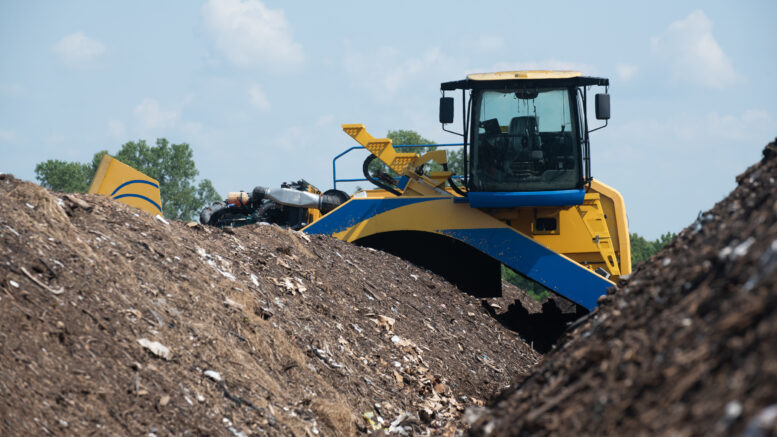By Shera Dalin
Money doesn’t grow on trees, but banknotes from the St. Louis Fed can help trees grow.
Since 2012, the St. Louis Fed’s headquarters office has been turning “unfit” currency into compost via its vendor St. Louis Composting, of Valley Park, Missouri. In 2020, the St. Louis Fed’s Memphis, Tennessee Branch began to compost currency via its vendor, The Compost Fairy, of Memphis.
Unfit bills are those that are no longer suitable for circulation because they’re torn, defaced or otherwise damaged.
In 2023, the two St. Louis Fed offices diverted from landfills 115 million bills weighing 127 tons, ranging from $1 to $100 in face value. That figure is down from the 2022 amount of 136 million banknotes equaling 150 tons, said a cash operations manager at the St. Louis Fed.
The goal of the composting program is to make the St. Louis Fed more environmentally sustainable, the cash operations manager said.
“We try to do the right thing, and this is more sustainable and better than going to a landfill,” he said.
The path to compost begins with truckloads of currency rolling into the St. Louis Fed’s main office and Memphis Branch for sorting. High-speed machines take the first pass and separate out bills that are damaged or soiled as well as those that could be counterfeits, which are examined by human handlers. The machines can process 40 notes per second, checking them for authenticity, thickness (which indicates age), soil, graffiti and tears.
The currency deemed unfit is fed to shredders in St. Louis or Memphis and cut up into strips the size of grass clippings. From there, it’s moved into a dumpster-sized compactor and removed by St. Louis Composting or The Compost Fairy.
U.S. currency paper is made of 75% cotton and 25% linen, according to the Bureau of Engraving and Printing.
In the St. Louis area, St. Louis Composting hauls the compacted shredded money to its facilities in Belleville, Ill., St. Louis and Maryland Heights and Pacific, Missouri. Those facilities combine the shredded currency with food, trees, grass and other organic waste windrows, said Laura Gale, sustainability coordinator for St. Louis Composting.
“The shredded currency is a useful part of composting as it adds additional volume and material and a unique element that we do not get from any other customer,” Gale said.
Three to six months later, depending on conditions and the material inside the windrows, a rich, dark soil amendment for gardens and landscapes results. St. Louis Composting and the Missouri Botanical Garden sell bags of the resulting compost, named “Black Gold,” to individual customers. Commercial customers like lawn care companies buy compost in bulk for landscaping uses. The Black Gold Compost is the company’s most popular seller, said Sarah Wilcox, marketing manager at St. Louis Composting. As a result, shredded currency from the St. Louis Fed is enriching gardens and landscapes in a 150-mile radius around the St. Louis region, Gale said.
The author is the media relations coordinator in the St. Louis Fed’s External Engagement and Corporate Communications Division.
Follow us on social media:

Be the first to comment on "How retired dollars end up as compost"